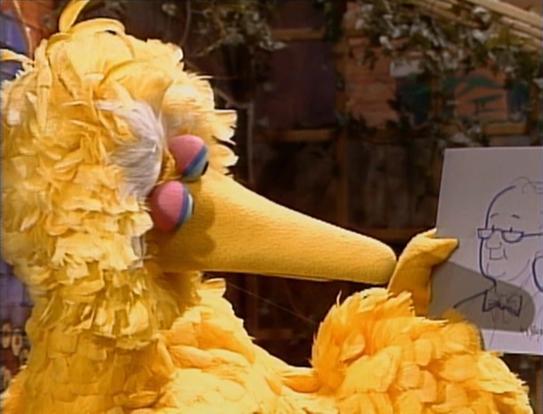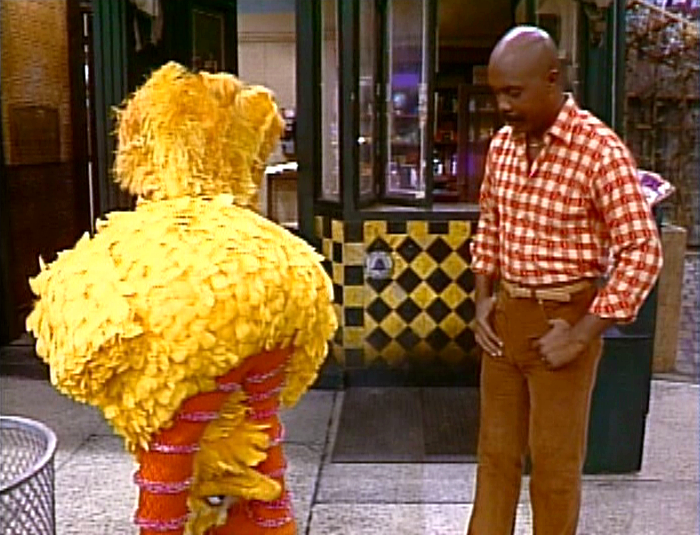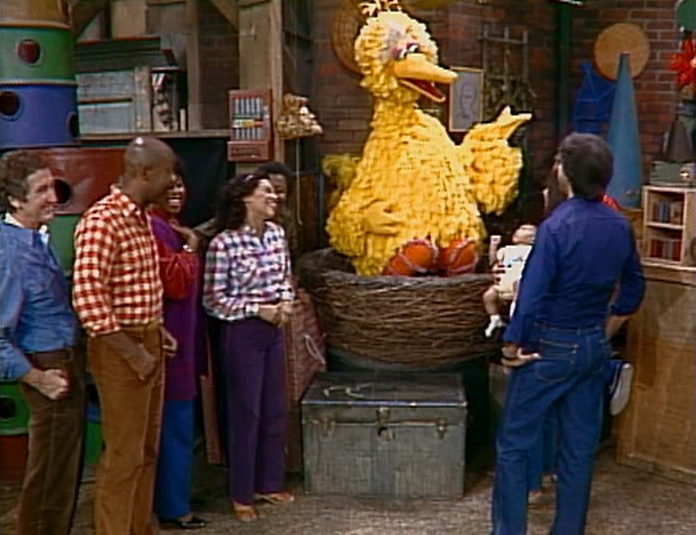Looking Back at Mr. Hooper
 It's been over thirty years since one of Sesame Street's most memorable episodes: the one that deals with the death of Mr. Hooper. For children of the early 80s, it's a generational touchstone, something nearly everyone has a personal memory of. But decades later, there are generations who know little to nothing about Mr. Hooper. Even people who did see the episode may not remember much about it or anything else about Mr. Hooper. So today, we're looking back at Mr. Hooper, the actor who portrayed him, and the episode that came from the passing of both.
It's been over thirty years since one of Sesame Street's most memorable episodes: the one that deals with the death of Mr. Hooper. For children of the early 80s, it's a generational touchstone, something nearly everyone has a personal memory of. But decades later, there are generations who know little to nothing about Mr. Hooper. Even people who did see the episode may not remember much about it or anything else about Mr. Hooper. So today, we're looking back at Mr. Hooper, the actor who portrayed him, and the episode that came from the passing of both.
https://youtu.be/TL9l-6uUKbU
Mr. Hooper's death would likely not have made such an impact if his life hadn't been important to millions of kids. Mr. Hooper was one of the original human cast members, appearing in the premier episode of Sesame Street back in November of 1969. He was the proprietor of Hooper's Store, a lunch counter, general store, and favorite hangout of the street's residents. He started out as a slightly curmudgeonly character, but he softened over the years, becoming a grandfather figure to Big Bird in particular. A running gag had Big Bird repeatedly forgetting Mr. Hooper's name and coming up with incorrect rhyming variations, including Mr. Cooper, Mr. Super, Mr. Looper, and - unfortunately - Mr. Pooper. It was a constant source of frustration for Mr. Hooper, but it never seemed to damage his relationship with Big Bird. Despite being older than most of the other characters, Mr. Hooper would frequently join in their adventures, including a trip to Hawaii where he learned how to surf. Other stories hinted at Mr. Hooper's life beyond the store, such as an episode where he received a diploma from the night school he had been attending to get his GED. The diploma also revealed the character's full name for the first time: Harold Hooper.

Much of Mr. Hooper's appeal can be attributed to actor Will Lee. Lee began acting in the early 1920s, appearing in many plays and a few films. He was blacklisted in 1948 when one of the acting groups he was a member of was accused of being a Communist front. His roles were largely onstage and scarce for a while, but he continued to teach acting; James Earl Jones was among his students. In both his teaching and his performances, he stressed naturalism and drawing on one's own emotion and experiences for inspiration. Naturalism may seem hard to achieve when many of your fellow cast members are Muppets, but Lee still made Mr. Hooper feel like an authentic person. The sincerity of his performances helped to ground the show and inspired his fellow actors to bring new levels of sincerity and honesty their own performances, even the scenes about the merits of the letter N.
In 1982, the 74 year old Lee was having health issues. He taped what would come to be his final episodes of Sesame Street in November of that year and was at the Macy's Thanksgiving Day parade with other characters from the show. Just days later, on December 7th, Lee died of a heart attack.
https://youtu.be/B48N_5_xhVQ
The material that Lee had filmed prior to his passing meant that the show could run for a year before having to explain Mr. Hooper's absence. Simply not mentioning it was out of the question; Mr. Hooper was one of the most popular and recognizable of the human characters and kids would be certain to notice that he wasn't around anymore. After toying with alternatives including saying that Mr. Hooper had retired and moved away, the producers decided to take the honest route and use Will Lee's passing as an opportunity to teach children about death.
Talking honestly about death in a TV program for any audience is not easy task. Like everything on Sesame Street, the episode was the result of tons of research and discussions with child development professionals. The decision was made to keep the message honest and simple, geared towards common questions children have when someone dies. There is no discussion of the specifics of Mr. Hooper's death or the idea of aging. Even any mention of the hospital is left out for fear that kids might associate the hospital with death and be frightened should they or someone in their family ever need to go.
https://youtu.be/xLRx_l5UKhk
What is remarkable about this episode is how much it remains a standard episode of Sesame Street. It was timed to air on Thanksgiving of 1983, when children would likely be around many adults who could watch the episode with them and discuss it with them. But it's not a special. It follows the usual format for the show at the time, breaking up the "street" scenes with animated segments, footage of children playing, and Muppets, most of which could and did appear on other episodes.
Even the episode's street scenes aren't exclusively focused on Mr. Hooper and his passing. The episode starts with Muppet cowboy Forgetful Jones telling Gordon about the simple things that make him happy, once he can remember what they are. Big Bird and one of the kids try to get Barkley the dog to jump over a rope. Big Bird listens in on a conversation his grown-up friends are having about their neighbors' new baby. Some of these scenes do have tentative connections to the one where Mr. Hooper's death is discussed; Forgetful Jones is talking about his feelings and the conversation about the baby sets up what the adult characters are doing when the key scene begins. But like the in-between segments, they wouldn't feel out of place in any other episode.

The one scene that really gives additional meaning to the death conversation has Gordon discovering Big Bird walking with his head between his legs. Gordon asks Big Bird why he is doing that and Big Bird replies "Because." When Gordon presses Big Bird for a better explanation than "just because." Big Bird responds "Well, I guess I could try, but I don't think I could come up with a better reason." Gordon thinks about this for a second, smiles, and tells Big Bird he understands. It's still nothing out of the ordinary for the show, but it gives new meaning to some of the later dialogue.
If you haven't seen the episode or the scene in a long time, you may have forgotten that it's not actually about the human characters telling Big Bird that Mr. Hooper has died. It's about the characters realizing that Big Bird doesn't understand what that means and doing their best to explain it to him. This gives the adults in the room reason to be going along with their lives rather than already mourning the loss of their friend when Big Bird comes along. But it doesn't make it any easier for them when they realize that Big Bird still expects Mr. Hooper to come back. There are a lot of awkward glances and periods of silence between the characters. They offer Big Bird reassurance that he will still be cared for and that all the things that Mr. Hooper used to do for him will still happen. But they don't have easy prepared answers for him. They aren't giving speeches. It's outright stated that everyone feels sad about losing Mr. Hooper, but the unspoken message is that talking about death is hard for adults too.
This is brought home towards the end of the scene, when Big Bird demands an explanation for why this had to happen, why things couldn't just stay the way they were. His grown-up friends are silent for a moment, then Susan leans forwards and whispers something inaudible to her husband Gordon. Gordon then tells Big Bird "It has to be this way because." With the scene taken out of context, it feels like the best Gordon can come up with at the moment. But if you've watched the whole episode, it's a callback to their earlier conversation. Gordon is telling Big Bird that - while he could try to come up with a kid-appropriate explanation of serious illness or aging - there is no reason why Mr. Hooper had to die that will satisfy Big Bird, just as there is no reason why Big Bird was walking with his head between his legs that could satisfy Gordon.
The two segments following the scene are both free of dialogue, presumably to allow for any conversations between families watching the show to go ahead uninterrupted. The first is simply close-up images of a flower over classical music. The next is an animated segment in which a person picks flowers that then wilt and decides to simply enjoy the remaining flowers as they grow.

The final scene of the episode shows Big Bird hanging up the now framed portrait he had wanted to give to Mr. Hooper by his nest. (It and all of the other cast portraits were drawn by Big Bird's puppeteer Caroll Spinney, who is a gifted cartoonist.) Several of the grown-ups stop by to visit, including the couple with their new baby. Like the rest of the episode, it's not meant to distract from the death of Mr. Hooper, but to put it into the context of everything else. Life continues on Sesame Street, just as it does in the real world. Death is a part of that, just as much as birth, happiness, walking around with your head between your legs, and the number 5.
The episode was extremely well received and praised by critics and families alike. It is featured prominently in many Sesame Street histories and retrospectives. Mr. Hooper and Big Bird's portrait of him have been mentioned of featured in later episodes, including one where a bird art collector (who is both an art collecting bird and a collector of works by bird artists) wants to buy the portrait for a substantial amount of birdseed. Hooper's Store is still called Hooper's Store and the portrait still hangs by Big Bird's nest. And for kids who grew up with Mr. Hooper, both he and the day he died remain a part of their childhood memories.
